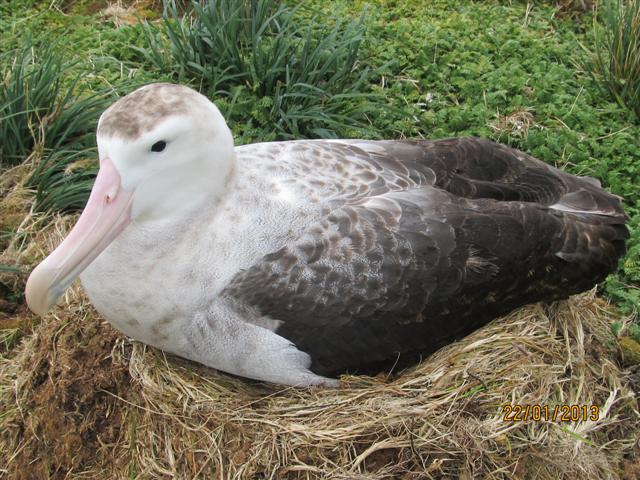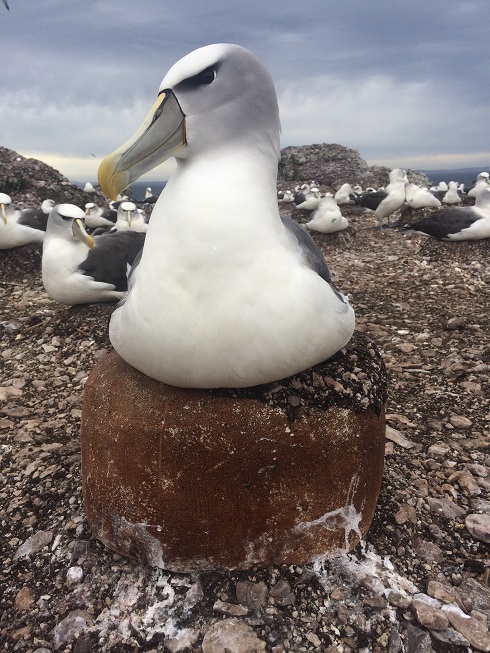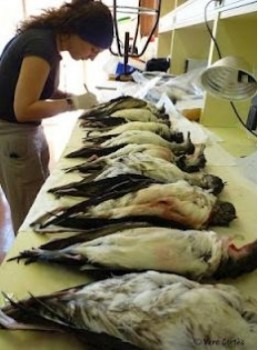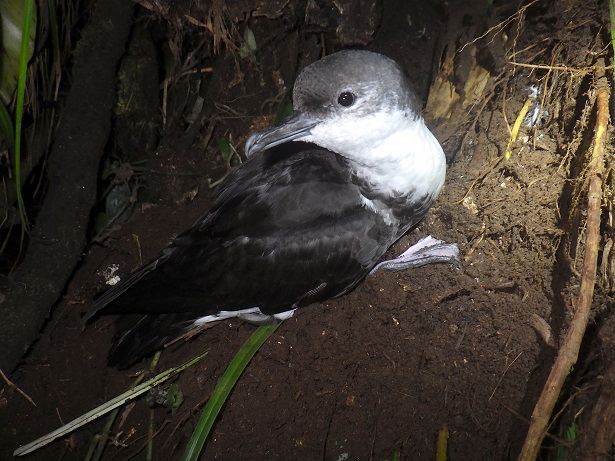Susan Waugh (Museum of New Zealand Te Papa Tongarewa, Wellington, New Zealand,) and colleagues published open access last year in the online journal PLoS ONE on globally Near Threatened Buller's Albatrosses Thalassarche bulleri feeding their chicks the remains of juvenile Sooty Shearwaters Ardenna grisea, also a globally Near Threatened species.
The paper’s abstract follows:
“Albatrosses are flexible and adaptable predators, relying on live prey as well as carrion. Use of predictable food sources and reliance on human-produced resources are well-known trait in long-range feeders like albatrosses and petrels. Breeding Buller's albatrosses studied at Solander I. (Hautere), New Zealand fed their chicks the remains of sooty shearwater juveniles (tītī in Māori), which are harvested from nearby muttonbirding sites. Evidence of this food type was found at over 10% of nests examined, and 17±40% birds that were fitted with GPS loggers visited muttonbirding sites in this and previous studies. Muttonbirding is a traditional practice that has continued for centuries, with up to 120 tonnes of offal discharged to the sea annually during the present day harvest. It coincides with the energetically-demanding early chick period for the albatrosses. Our finding suggests that the offal may be an important, but overlooked element in the albatross diet. As an important supplementary food for the albatrosses it is likely to have contributed to the 3% per annum growth of their populations since the first comprehensive population surveys in 1969.”
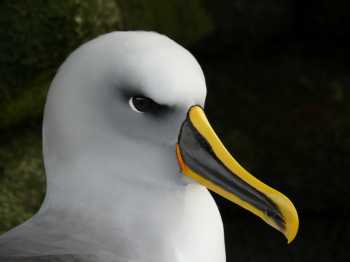
Buller's Albatross, photograph by Paul Sagar
Read a popular account of the paper here.
Reference:
Waugh, S.M., Poupart, T.A., Miskelly, C.M., Stahl, J.-C. & Arnould, J.P.Y. 2017. Human exploitation assisting a threatened species? The case of muttonbirders and Buller's albatross. PLoS ONE 12(4): e0175458.
John Cooper, ACAP Information Officer, 16 February 2018

 English
English  Français
Français  Español
Español 